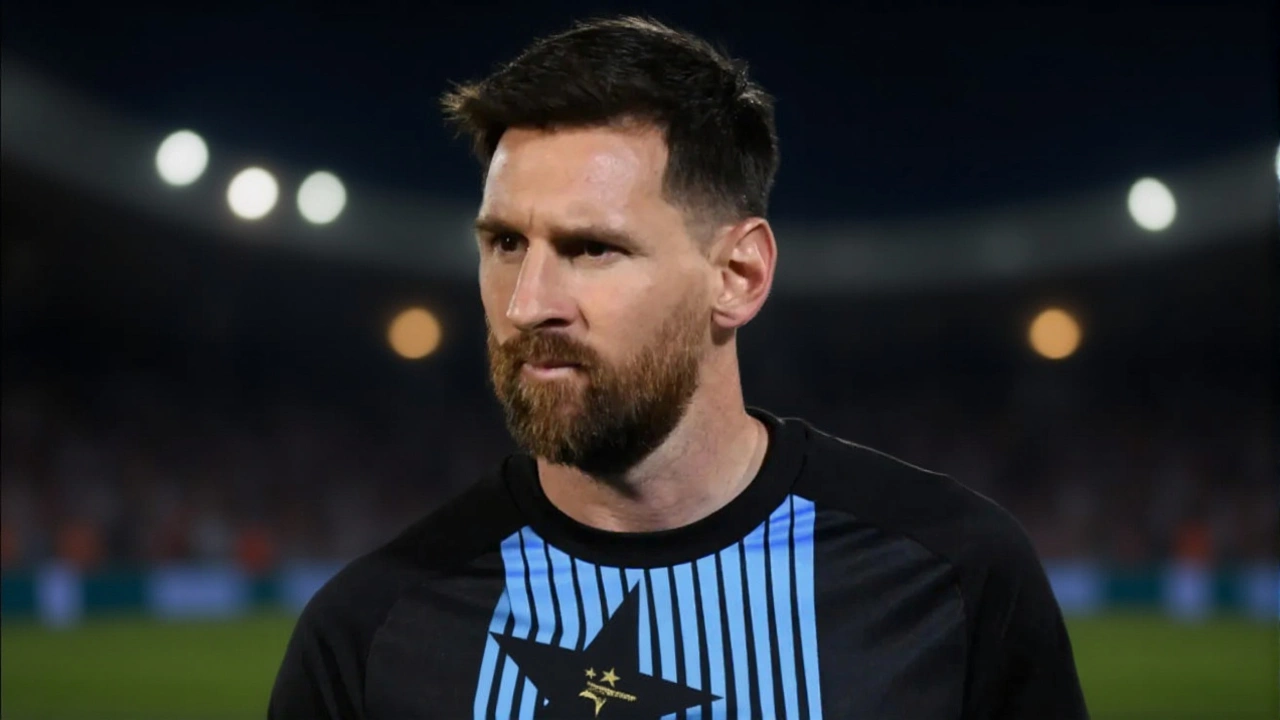When Diego Armando Maradona (1960-10-30 – 2020-11-25) first slipped on the iconic No. 10 shirt for Argentina at the 1982 World Cup in Spain, he unknowingly set the stage for a saga that would stitch the number into the nation’s football DNA. Mario Alberto Kempes had already lifted the trophy in 1978, the 1978 FIFA World Cup in Buenos Aires, but it was Maradona’s magic three years later that turned the jersey into a mythic talisman. Fast‑forward to today, Lionel Messi is poised to become the final custodian, while Claudio Tapia, president of the Asociación del Fútbol Argentino (AFA), has floated the idea of retiring the number forever. The question isn’t just about a jersey; it’s about who gets to write the next chapter of Argentine identity on the global stage.
From Kempes to Maradona: The Early Days
Before the roar of the ’86 Azteca crowd, Mario Alberto Kempes was the man with the numbers. Born on 15 July 1954, Kempes earned the No. 10 spot at the 1978 World Cup not because he was the playmaker, but because squad numbers were handed out alphabetically – a quirk that turned historic. Under coach César Luis Menotti, Kempes shifted from attacking midfielder to centre‑forward during the second‑round clash with Poland, eventually snatching the Golden Boot with six goals.
His club career was a tour of Spain and home soil: a seven‑season stint with Valencia CF in La Liga, and spells at Instituto, Rosario Central and River Plate. Yet, despite his prolific scoring, Kempes never quite eclipsed the cultural weight of the number – that would belong to the boy from Villa Fiorito.
Maradona’s Mythic Era
The 1986 FIFA World Cup in Mexico is where the No. 10 transcended sport. A 21‑year‑old Maradona led Argentina to the final, but it was the quarter‑final against England that sealed his legend. The infamous ‘Hand of God’ goal, followed moments later by the ‘Goal of the Century’ – a 60‑meter sprint past five defenders – turned the jersey into a symbol of audacious brilliance and national pride.
Even when injury crippled him at the 1990 World Cup in Italy – he played effectively on one leg – Maradona’s presence propelled Argentina to a second consecutive final, losing only to West Germany. His charisma off the pitch, combined with a turbulent personal life, only amplified the myth: the No. 10 became synonymous with both genius and controversy.

Riquelme, Dybala and the Modern Playmakers
After Maradona’s retirement, the torch passed to a new generation of craftsmen. Juan Román Riquelme, dubbed “El Último 10”, embodied the classic Argentine ‘enganche’ – a deep‑lying playmaker who relied on vision rather than speed. Former Barcelona coach Louis van Gaal famously said, “When we have the ball, we have the world’s best player. When we lose the ball, we play with 10 men,” a nod to Riquelme’s influence.
More recent stars like Paulo Dybala and Ángel Di María have also worn the No. 10, though none have managed to cement the aura that Maradona or Kempes did. Their contributions, however, keep the number relevant in an era that values versatility over traditional roles.
Messi: The New Legend and the Retirement Debate
Enter Lionel Messi. As of 10 October 2025, Messi boasts 194 caps and 114 goals – both national records – and has lifted the Golden Ball twice (2014, 2022). The 2022 FIFA World Cup in Qatar saw Messi finally claim the ultimate prize, sealing a 3‑2 victory over France in a drama that felt like a cinematic closing of his international saga.
When Messi is unavailable, the No. 10 has been a revolving door: Sergio Agüero (7 matches), Ángel Correa (5), Paulo Dybala (2), Ángel Di María (2) and Enzo Pérez (2). Yet none have been able to erase the imprint of Messi’s quiet, relentless mastery.
In February 2025, AFA president Claudio Tapia announced a bold plan: once Messi hangs up his national team boots, the No. 10 will be retired for life, a tribute “the least we can do for him.” The proposal echoes a failed 2002 attempt by former AFA chief Julio Grondona to retire the number in Maradona’s honor, thwarted by FIFA’s then‑mandate that squads use numbers 1‑23. Today, FIFA’s regulations have softened, but any change would still need approval from the global body.

What Retiring Number 10 Means for Argentine Football
Retiring a jersey is more than a ceremonial gesture; it reshapes the narrative for future generations. It would cement Messi’s era as the culmination of a lineage that started with Kempes and was immortalized by Maradona. For young players in Buenos Aires streets, the number would shift from a target to a legacy – a story of what was achieved rather than a shirt to chase.
Critics warn that freezing the No. 10 could stifle the symbolic fire that drives emerging talent. After all, football thrives on icons, and a vacant number might leave a psychological void. Yet supporters argue the move would honor a unique convergence of talent, triumph, and national identity that may never be replicated.
- Key facts: Kempes – Golden Boot 1978; Maradona – “Hand of God” 1986; Messi – 114 goals, 2022 World Cup winner.
- Current AFA stance: retirement proposal pending FIFA approval.
- Potential impact: heightened reverence for the No. 10 legacy, possible shift in youth development focus.
Frequently Asked Questions
How would retiring the No. 10 affect future Argentine squads?
Without the iconic number, coaches would assign alternatives, likely fostering new traditions. Young players might channel their ambition toward other historic numbers, such as the No. 9 or No. 7, while the retired jersey becomes a symbolic benchmark of excellence.
What precedent exists for retiring jersey numbers in international football?
Very few national teams have retired numbers; Brazil retired the No. 10 for Pelé in friendly matches, while Germany honored the No. 7 for Franz Beckenbauer in specific contexts. FIFA’s regulations still require numbered squads, making permanent retirements rare and subject to special approval.
Who are the most notable players besides Messi to have worn the No. 10?
Beyond Maradona and Kempes, the jersey has featured Juan Román Riquelme, known for his elegant playmaking, and Paulo Dybala, who brought a modern, versatile edge. Even short‑term wearers like Ángel Di María added flair during Messi’s occasional absences.
Why was the earlier attempt to retire the number for Maradona blocked?
In 2002, former AFA chief Julio Grondona proposed the retirement, but FIFA required national teams to wear numbers 1‑23 during official tournaments. The rule prevented any permanent removal of a number, forcing the proposal to be shelved.
What is the likelihood Messi will retire before the 2024 Copa América?
As of late 2025, Messi has hinted he may play in the 2024 Copa América, but no definitive decision has been announced. His physical fitness remains high, yet age and personal considerations make a retirement anytime this cycle plausible.

